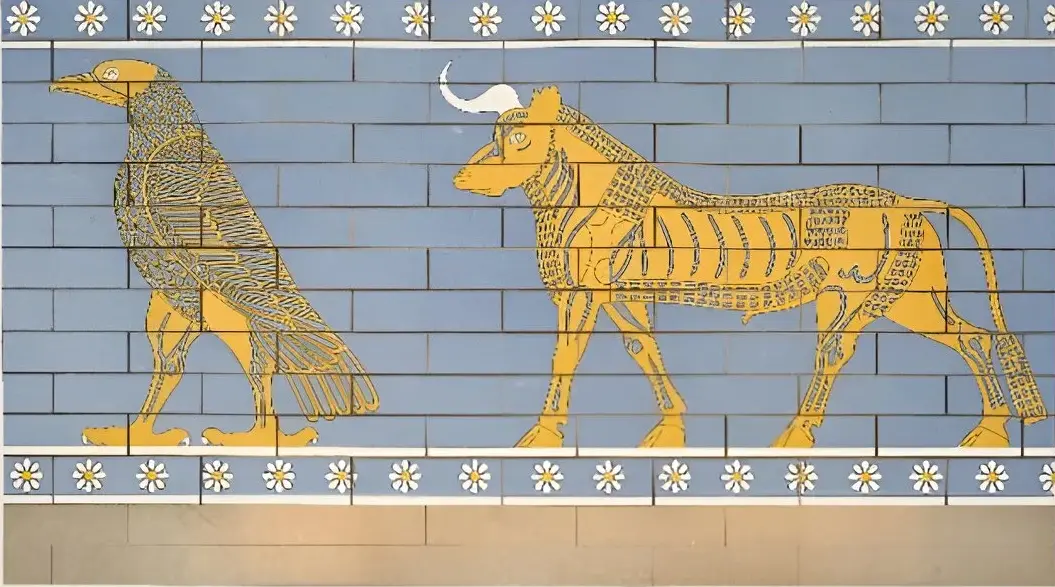Ancient symbols found in a 2,700-year-old temple that have confused experts for more than a century, Trinity Assyriologist Dr. Explained by Martin Worthington. Assyrian king II. A number of “mysterious symbols” appeared in temples at various sites in the ancient city of Dur Sharrukin in modern Khorsabad, Iraq, ruled by Sargon (721-704 BC).
The sequence of five symbols (lion, eagle, bull, fig tree and plow) first became known in the modern world thanks to drawings published by French excavators at the end of the nineteenth century. Since then, there has been a storm of ideas about what these symbols might mean.
These are compared to Egyptian hieroglyphs, which are perceived as a reflection of imperial power and are suspected to symbolize the king’s name, but how?
from the Trinity School of Languages, Literatures and Cultural Studies. Martin Worthington proposed a new solution in an article published on April 26. Bulletins of the American Schools of Oriental Studies. He claims that the Assyrian words for the five symbols (lion, eagle, bull, fig tree, and plow) contain the sounds in the correct order that spell out the Assyrian form of the name “Sargon” (šargīnu).
Sometimes only three symbols (lion, tree, plow) are used at an archaeological site; Dr. Worthington suggests that it was again called “Sargon” on similar principles. Dr. Worthington commented: “The study of ancient languages and cultures is full of puzzles of all shapes and sizes, but it is not uncommon to find mysterious symbols on a temple wall in the ancient Near East.”
Dr. According to Worthington, each of up to five symbols can also be understood as a constellation. So the lion represents Leo and the eagle represents the Eagle (our constellations are largely inherited from Mesopotamia through the Greeks, many of them are the same). The fig tree replaces the constellation Chin, which is difficult to represent (we don’t have it today), because isu “tree” sounds like isu “chin.”
“The effect of the five symbols was to keep Sargon’s name in heaven forever; This was a cunning way to immortalize the king’s name. And of course, the idea of vain people writing their names on buildings is not unique to ancient Assyria,” says Dr. Worthington.
Ancient Mesopotamia, or modern-day Iraq and neighboring regions, was home to the Babylonians, Assyrians, Sumerians, and others, and is explored today using abundant surviving cuneiform script. Indeed, writing was probably invented there around 3400 BC. So even though Sargon’s scientists did not know it, when they developed new written symbols they were repeating the history of Mesopotamia a thousand years ago.
Dr. Worthington explained: “I can’t prove my theory, but the fact that it works just as well for a set of five symbols as it does for a set of three symbols, and that the symbols can also be understood as culturally acceptable constellations” I was very impressed. The odds of this all being a coincidence are – pardon the pun – astronomical.”
Dr. Worthington specializes in the languages and civilizations of ancient Mesopotamia, including the Babylonians, Assyrians, and Sumerians.
“This region of the world, which includes modern-day Iraq and parts of Iran, Turkey and Syria, is often called the ‘cradle of civilization.’ It is the birthplace of cities and empires, and its history forms a large part of human history.”
Today we have 60 minutes in an hour due to the Mesopotamian habit of counting to sixty, and Abraham (a central figure in three major world religions) is said to have come from the Mesopotamian city of Ur.
“Solving (or trying to solve) puzzles is especially fun,” says Dr. Worthington writes, “but the study of Mesopotamia as a whole has a larger purpose: to understand the complexity and diversity of the vast majority of human societies and cultural achievements.”
Source: Port Altele
